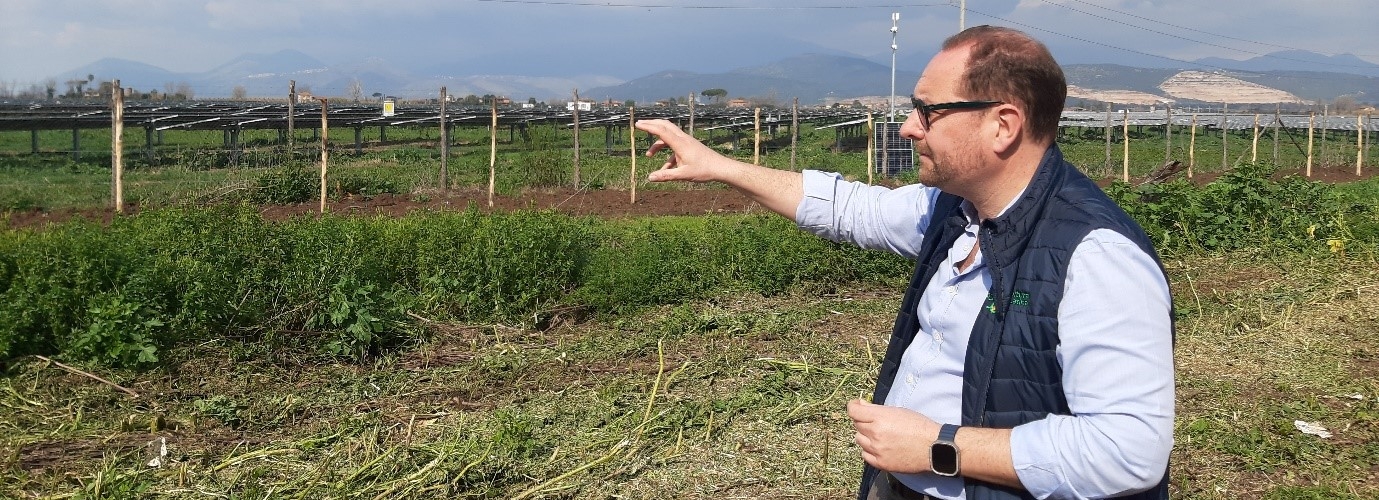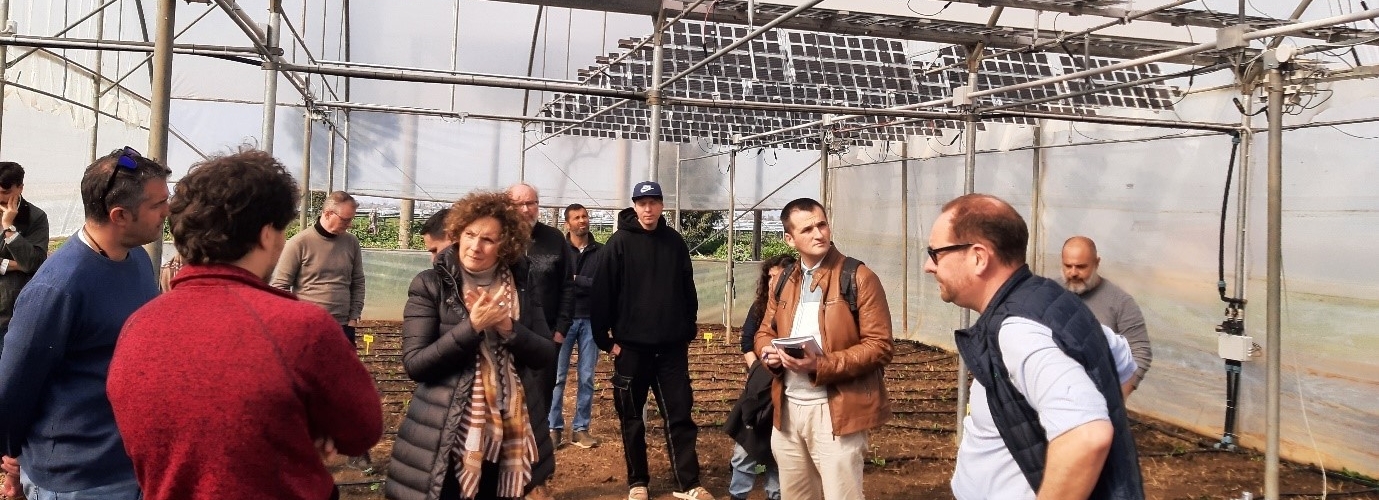
Photo: Marco Berardo Di Stefano and his large 70-megawatt photovoltaic (PV) field.
How renewable energy is improving farming across Europe
The theme of this year’s Earth Day, Our Power, Our Planet, challenges us to accelerate the transition to renewable energy, with the ambition to triple clean electricity generation by 2030. Agriculture, a sector deeply connected to both land and energy use, has an important role to play in the transition.
In this context, the HarvRESt project – supported by a consortium of European partners including Climate KIC – is working with farmers to explore how Renewable Energy Systems (RES) can be integrated into food production. Launched in January 2024, HarvRESt brings together 16 partners from seven countries to address the challenge of reducing agricultural emissions, while maintaining, and often enhancing, productivity.
Installing green energy systems on a farm is rarely straightforward. Land use, seasonal cycles, energy demand, and regulation all influence what’s possible. HarvRESt aims to support better, more informed decisions by developing tools that reflect the complexities of real farming environments.
That’s why the project is working closely with five pilot sites across Italy, Denmark, Spain, and Norway, collecting real-world data and co-developing practical solutions. Among them is Fattoria Solidale del Circeo, a farm just outside Rome run by Marco Berardo Di Stefano, where renewable energy meets a broader vision of social and environmental sustainability. We spoke with Marco to learn more about his farm’s philosophy, the energy systems used on site, and what it means to be part of the HarvRESt project.
Climate KIC: Can you introduce your farm and how it has evolved?
Marco: We are an organic farm, and we produce mainly vegetables and legumes, some of which we also process ourselves. Over the years, we’ve transitioned from a traditional, dairy operation into something more innovative and inclusive. We’re also a social farm, and our work is guided by the three pillars of sustainability: ethical, ecological, and economic. All three need to work together if we want agriculture to be truly regenerative.
Your farm places a strong emphasis on inclusion. How do you put that into practice?
Yes, the social aspect of our farm is really important. As a social enterprise, we work with people with disabilities, people from minority backgrounds, and those with specific needs. They are integrated into daily operations: planting, harvesting, maintaining infrastructure. This is social work, but we also see it as a model of regeneration. Agriculture can restore both land and lives.
What inspired you to take this approach?
This is part of my own personal history – I was a volunteer in an organisation that helped people with special needs, and I wanted to introduce these values into my own farm. I believe that agriculture has a role beyond food – it can create inclusion and purpose. That’s what motivates us every day.
Why did you decide to integrate renewables into the farm?
Many reasons – of course, it’s sustainable from an environmental perspective, but it also makes sense from a financial point of view. Agriculture needs a lot of energy, and it’s better if you can produce it yourself.
What kind of renewable energy systems are you using?
We have a large 70-megawatt photovoltaic (PV) field. While the energy it produces is sold externally rather than used directly on the farm, the land between the panels is used to grow legumes for animal feed – an example of how agricultural use and energy production can coexist. We also have a PV system on the rooftop of our old stables. What’s really exciting is our semi-transparent PV panels inside our greenhouses, part of another Horizon Europe-funded project called REGACE. These panels, located under the roof, allow sunlight to pass through while also providing some shade, and of course, generating electricity that can eventually be used for irrigation. In the greenhouse, we’re growing tomatoes, courgettes, aubergines and lettuce – and we’re comparing results from areas with and without the panels to study impacts on growth and plant health. In a few months, we’ll have the results.

Photo: Marco showing the greenhouse PV system to HarvRESt consortium members.
What challenges have you faced in implementing these technologies?
Thousands of challenges! Building permits and administrative validation have been a real barrier, especially with the PV field. Connecting prototypes to the grid is not always easy, and the Common Agricultural Policy (CAP) isn’t yet fully fit to support these innovations. The technology exists, the farms are ready – but policy and bureaucracy are lagging behind.
What would help farms like yours scale these solutions?
We need better financial incentives for renewable energy production and consumption, as well as faster and clearer permitting processes, which encourage experimentation rather than punishing it. In my opinion, this is also true for soil carbon sequestration practices – clearer regulation for systems such as carbon credits would be helpful to support climate-smart farming in general.
Do you see your work as part of a bigger transition?
As I mentioned earlier, on the farm, we have people working on our renewable energy systems, so in a sense, we’re part of the wider shift toward a greener economy, as we’re creating green jobs.
We’re also trying to move to a smarter type of agriculture using less pesticides and petrol, and storing more carbon in our soils – of course, renewable energy plays a vital role in this transition.
Are you aiming for energy self-sufficiency?
Yes, that’s the goal. We’re not fully there yet, but we’re getting closer. We’re currently producing a lot of surplus energy, which we’re selling.
What does being part of HarvRESt mean to you?
The potential is enormous. Being in this project means we can collaborate with researchers across Europe, learn from other farms, and share what we’re doing. It gives us visibility and support – and helps us feel part of something bigger.
You can learn more about the HarvRESt project, its pilot farms, and results, here on the project website. Also, make sure to follow the project on LinkedIn for the latest updates.
